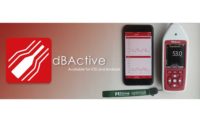Researchers compared visual acuity assessment with a novel smartphone app (Peek Acuity) and a standard method in 111 children (ages 3–17 years) who were referred to an ophthalmology clinic.
Children underwent monocular vision assessments with both methods, in random order. The app was used as follows: with the examiner holding the phone two metres away, the child indicated the direction of the arms of an “E” displayed on the screen, and the examiner swiped the screen in that direction. If the child couldn’t see the “E,” the app notified the examiner to move to 1 meter away and, if necessary, 30 cm. At the end of the test, the phone displayed visual acuity results. Standard vision assessment was conducted in an examination lane using a computer screen.
Agreement between the two methods was good. The app was 83% sensitive and 70% specific for identifying children with referable eye conditions. Among children aged 3 to 5 years, the app was 100% sensitive and 39% specific for referable eye conditions and for decreased vision.
This smartphone app showed excellent results for detecting eye conditions in children in an ophthalmology setting and holds value as a potential office screening tool for detecting vision problems in the most important early ages.
Source: The Daily Star (Bangladesh)





